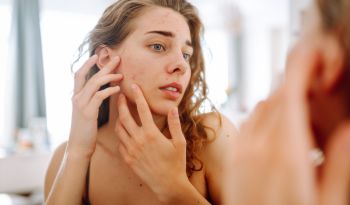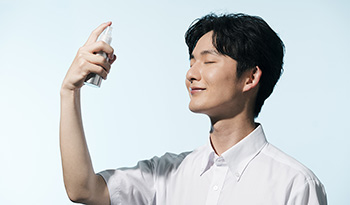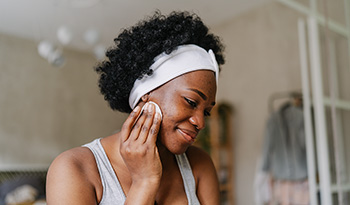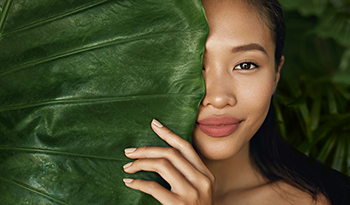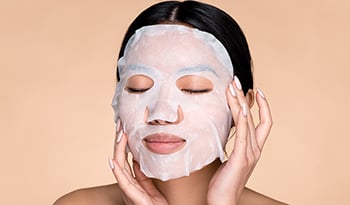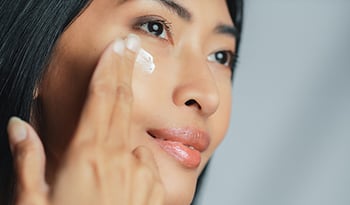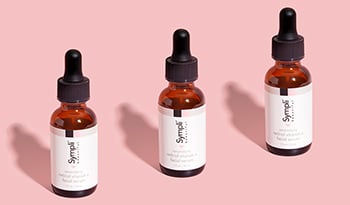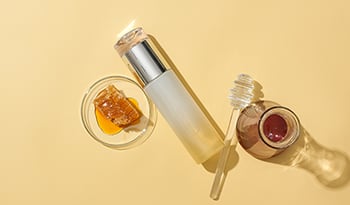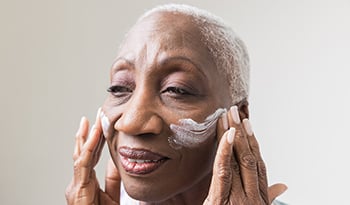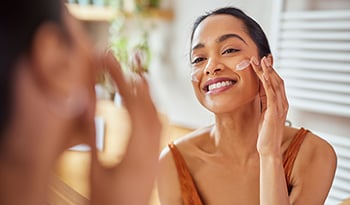Кофеинът в грижата за кожата: Антиоксидантни и противовъзпалителни ползи и още
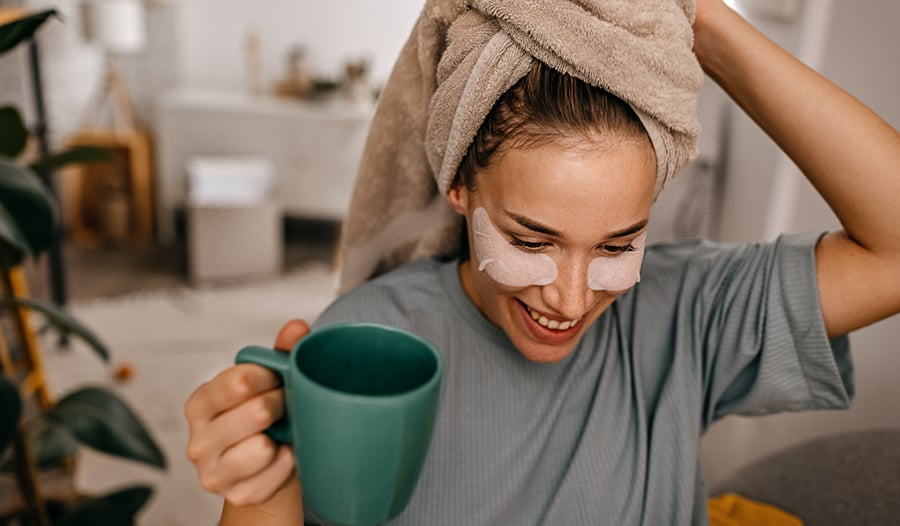
Колко обичате сутрешното си кафе? Ако сте фанатик на кофеина като мен, имам добри новини. Кофеинът е не само чудесен начин да ободрите мозъка си - той може да ободри и кожата ви!
Кофеинът е популярен стимулант, който се употребява ежедневно от милиони хора по света. Кофеинът е естествено съединение в кафето, чая и други храни от растителен произход. Той принадлежи към клас съединения, известни като метилксантини, които са известни със стимулиращото си въздействие върху организма.
Когато се консумира, кофеинът действа, като блокира действието на аденозина - невротрансмитер, който ни кара да се чувстваме уморени и сънливи. Това повишава бдителността и яснотата на ума, затова много хора се обръщат към кофеина, за да започнат деня си.
Докато повечето хора са запознати с въздействието на кофеина върху мозъка, мнозина не знаят за потенциалните му ползи за кожата. През последните години кофеинът се превърна в популярна съставка в много продукти за грижа за кожата, особено в тези, които са насочени към намаляване на появата на кръгове под очите, бръчки и фини линии. Ползите от кофеина за кожата се дължат основно на три негови важни свойства:
- Антиоксидант
- Противовъзпалително
- Кръвообращение
В тази статия ще разгледаме по-подробно науката за кофеина и как той може да помогне за подобряване на здравето и външния вид на кожата ви.
Антиоксидантни ползи от кофеина за кожата
Кофеинът осигурява мощни антиоксиданти, които могат да помогнат за защита на кожата от оксидативно увреждане и да подобрят младежкия ѝ вид. Антиоксидантите са молекули, които помагат да се противодейства на уврежданията, причинени от оксидативния стрес (увреждане от свободните радикали). Ултравиолетовата (UV) светлина от слънцето, замърсяването и други фактори на околната среда могат да причинят увреждане от свободните радикали. В кожата уврежданията, причинени от свободните радикали, водят до разграждане на клетъчната ДНК и жизненоважни за кожата протеини като колаген и еластин.
Колагенът е жизненоважен протеин, който играе решаваща роля за поддържането на здравето и структурата на кожата. Той е най-разпространеният протеин в организма и основен компонент на извънклетъчната матрица (ИМК), която осигурява структурна поддръжка на тъканите и органите. Колагенът е отговорен за структурата и здравината на кожата.
С напредването на възрастта производството на колаген в кожата естествено намалява, а увреждането от свободните радикали разрушава колагена. Това води до образуване на бръчки, фини линии и увисване на кожата. Антиоксиданти като кофеина могат да помогнат да се намали до минимум увреждането на колагена от свободните радикали, което води до по-младежки вид на кожата.
Еластинът е протеин, който работи заедно с колагена, за да осигури еластичност и устойчивост на кожата. Това е гъвкав протеин, който може да се разтяга и да се връща в първоначалната си форма, което позволява на кожата да се разтяга и свива, без да губи формата си. Еластиновите влакна се намират в дермисния слой на кожата и са отговорни за способността на кожата да се възстановява, след като е била издърпана или притисната.
С напредването на възрастта производството на еластин в кожата намалява, което води до загуба на еластичност на кожата. Това може да доведе до увисване и бръчки. Увреждането от свободните радикали, причинено от ултравиолетовите лъчи, също уврежда еластина, поради което кожата изглежда по-изпъкнала, жълта и безформена. Антиоксидантите, като кофеина, могат да помогнат за минимизиране на тези увреждания и да допринесат за по-светъл и сияен тен.
Противовъзпалителни свойства на кофеина върху кожата
Кофеинът намалява производството на провъзпалителни цитокини - молекули, които допринасят за възпаленията в организма. Това противовъзпалително действие може да помогне за намаляване на зачервяването, дразненето и подпухването на кожата и може да бъде особено полезно за хора с чувствителна кожа, акне или розацея.
Едно голямо проучване установи, че хората, които пият кофеин - особено кафе с кофеин - имат по-ниска честота на розацея. Повишеният прием на кофеин от храни, различни от кафето (чай, газирани напитки и шоколад), не е свързан значително с намален риск от розацея. Това подсказва, че има нещо специално в кафето с кофеин, което се свързва с риска от розацея.
В няколко големи проучвания кафето с кофеин и черният чай също се свързват с по-ниски нива на рак на кожата. Въпреки че връзката между консумацията на кофеин и по-ниския процент на рак на кожата е ясна, не е ясно дали кофеинът намалява риска от рак на кожата - хората, които консумират кофеин, може да имат по-нисък риск от рак на кожата по други причини. Въпреки това противовъзпалителните и антиоксидантните механизми на кофеина, които противодействат на уврежданията от ултравиолетовите лъчи, подкрепят хипотезата, че приемът на кофеин може да помогне в борбата с развитието на рак на кожата.
Ползи за кръвообращението от кофеина върху кожата
Кофеинът влияе на кръвоносната система по сложен начин. При някои обстоятелства той е вазоконстриктор, което означава, че кара кръвоносните съдове да се свиват или да се свиват. В други случаи кофеинът предизвиква разширяване на кръвоносните съдове и засилва кръвообращението.
Поради въздействието си върху кръвообращението кофеинът може да намали до минимум появата на зачервяване или лилави/сини сенки, причинени от кръвоносните съдове, които се виждат през кожата. Диуретичният му ефект също може да помогне за намаляване на подпухналостта. Със своите противовъзпалителни, антиоксидантни и циркулаторни свойства кофеинът е често срещана съставка в околоочните кремове.
Как да включим орален и локален кофеин
Както пероралните, така и локалните препарати с кофеин имат противовъзпалително, антиоксидантно и циркулаторно действие върху кожата.
Кофеинът се съдържа в различни храни и напитки. Количеството кофеин в тези продукти може да варира в широки граници - в някои има само следи, а в други - високи нива. Ето някои от храните и напитките с най-голямо съдържание на кофеин.
Кафе
Един от най-популярните източници на кофеин, кафето съдържа между 70 и 140 милиграма кофеин в чаша от 8 унции.
Чай
Черният и зеленият чай също съдържат кофеин, макар и в по-малки количества от кафето. Една чаша черен чай от 8 унции съдържа около 40-70 милиграма кофеин, а зеленият чай - около 25-45 милиграма. Чаят, особено зеленият, също съдържа полифеноли, които имат противовъзпалителни и антиоксидантни свойства.
Полифенолите са катехини, които включват епикатехин, епикатехин-3-галат, епигалокатехин и епигалокатехин-3-галат (EGCG). Доказано е, че полифенолите, особено EGCG, предлагат редица ползи за кожата. Тези съединения могат да помогнат за предпазване на кожата от ултравиолетовите лъчи, да намалят възпалението и да предотвратят разграждането на колагена, което може да допринесе за появата на фини линии и бръчки. Освен това полифенолите могат да спомогнат за здравословния растеж на кожните клетки и да намалят риска от кожни заболявания.
Чаят е кофеинова напитка с много потенциални ползи за кожата!
Енергийни напитки и сода
Енергийните напитки и газираните напитки са популярен източник на кофеин за много хора, като някои марки съдържат до 300 милиграма кофеин в кутия. За съжаление, много енергийни напитки и газирани напитки съдържат много добавена захар и изкуствени подсладители, които не са толкова здравословни - затова обикновено не ги препоръчвам.
Шоколад
Шоколадът съдържа малки количества кофеин, като по-тъмните сортове съдържат повече от млечния шоколад. Порция черен шоколад от една унция съдържа около 12 милиграма кофеин.
Важно е да се отбележи, че количеството кофеин в тези продукти може да варира в зависимост от марката, начина на приготвяне и размера на порцията. Ако решите да употребявате кофеин, правете го умерено и внимавайте за съдържанието на кофеин в храните и напитките, които консумирате. Консумацията на твърде много кофеин може да доведе до нежелани странични ефекти като безсъние и тревожност.
Локални приложения
Местно, кофеинът често се използва в кремове за очи. , серуми. , овлажняващи продукти. , както и други препарати за грижа за кожата, които са насочени към специфични проблеми като възпаление, тъмни кръгове, подпухналост и фини линии. Кофеинът е популярна съставка и в кремовете за стягане на кожата. Твърди се, че помага да се намали появата на целулит, въпреки че няма категорични доказателства, че действа.
Важно е да се отбележи, че ефективността на продуктите за грижа за кожата, съдържащи кофеин, може да варира в зависимост от конкретния състав и от типа кожа и проблемите на отделния човек. Като цяло търсете продукти, в които кофеинът е посочен по-високо в списъка със съставки.
Ако се интересувате от включването на кофеина в рутинната си грижа за кожата, започнете с малко количество и тествайте продукта върху малък участък от кожата си, за да сте сигурни, че няма да имате нежелани реакции. Освен това е важно да използвате слънцезащитни продукти и други мерки за защита от слънцето, за да предотвратите увреждането от UV лъчите и други фактори на околната среда, които могат да допринесат за стареенето на кожата. Ако имате специфични проблеми, добре е да се консултирате с дерматолог, преди да започнете нова процедура за грижа за кожата.
Затова си налейте още една чаша кафе или чай и оставете кожата си да се възползва от предимствата!
Препратки:
- Herman A, Herman AP. Механизми на действие на кофеина и използването му в козметиката. Skin Pharmacol Physiol. 2013;26(1):8-14.
- Li S, Chen ML, Drucker AM, et al. Асоциация на приема на кофеин и консумацията на кафе с кофеин с риска от поява на розацея при жените. JAMA Dermatol. 2018;154(12):1394-1400.
- Oh CC, Jin A, Yuan JM, Koh WP. Кафето, чаят, кофеинът и рискът от немеланомен рак на кожата при китайско население: Сингапурското проучване на здравето на китайците. J Am Acad Dermatol. 2019;81(2):395-402.
ОТКАЗ ОТ ОТГОВОРНОСТ:Този УЕЛНЕС ХЪБ няма за цел да поставя диагнози...














































































 Съдържание
Съдържание



